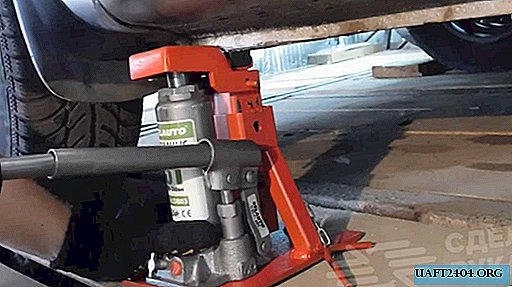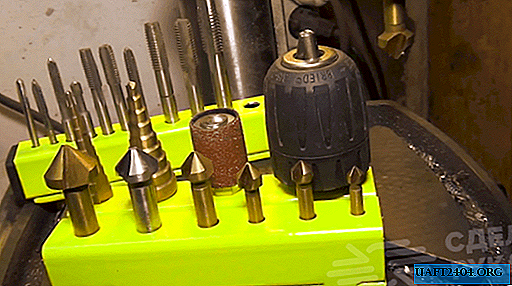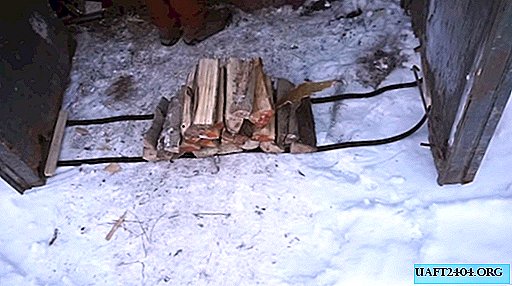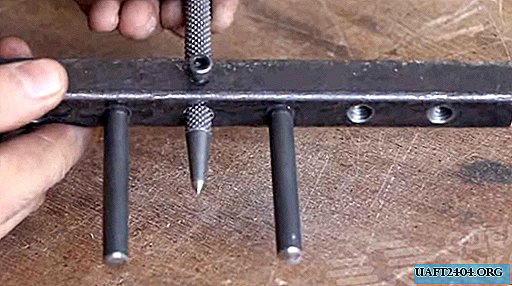Share
Pin
Tweet
Send
Share
Send
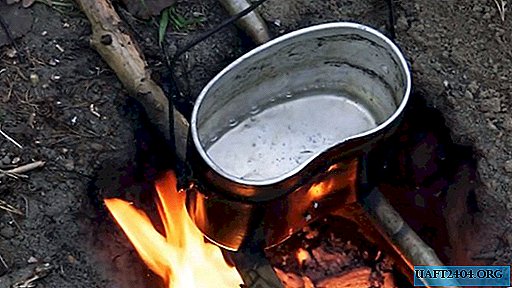
What to cook
To make a bonfire, you must have a large knife or sapper blade, matches or a lighter. If you have to bring firewood from a long distance, you will need a piece of any rope.
Process description
Clear a piece of land about 40 × 70 cm in size from fallen leaves and turf. Dig the first hole for the combustion chamber. Diameter is about 30 cm, if you have a paratrooper knife - excellent, its length from the tip to the end of the cullet is exactly 30 cm.

The dimensions of the pit are approximate, a spread of several centimeters is allowed. Mark the circle with chopsticks and start digging. To facilitate the work, it is better to first break hard ground with the tip of a knife, and then take it out of the hole with your palms.

If the roots of trees come across, then they must be cut off, the area of the pit should be clean. The depth of the pit is about 50 cm, the final parameters depend on the number of firewood, but as practice shows, throwing them too much is not worth it at once - the amount of smoke increases.


Starting from a depth of about 10 cm, increase the diameter of the hole, the pit should have the shape of a pear: at the top narrower and wider at the bottom.
From the finished pit, retreat 35-40 cm and start digging the second.

It will serve as a blower, a very important component of a smokeless bonfire. These works are a bit more complicated. The fact is that the blower must be connected to the combustion chamber by an underground tunnel. The diameter of the pit was blown approximately 15 cm, the beginning of the tunnel at a depth of about 20 cm from the ground. Select specific values depending on the physical characteristics of the soil.

Heavy clay soils keep their shape perfectly, there is no need to be afraid of landslides. On sandy or sandy soils, it is likely that the tunnel will fall asleep; you must dig the tunnel very carefully.

The tunnel from the blower should go with a slope, choose an angle so that at the exit it connects to the bottom of the pear. If this rule is not met, then not only will the fire burn badly, but much more smoke will appear.
Fuel tips

For a bonfire, it is recommended to select birch and alder. Aspen gives a lot of sparks, they rise to a considerable height and are perfectly visible in the dark. Coniferous trees have a natural resin, and when burning it emits a lot of smoke. Birch bark is best suited for ignition; prepare it too.
Such firewood may not be at the breeding site, then you need to harvest them while searching for a suitable place for a fire. The less moisture they have, the less smoke. Do not pick up branches from the ground, break only hanging ones.
Make a fire
We start with the bark. We set fire and lower it into the hole.

Then almost immediately we put thin dry branches on top of the burning bark. Well, then larger firewood.

Of course, such a bonfire is not suitable for heating, but you can boil water or cook food on it well (and without attracting too much attention).

Conclusion
The amount of smoke, all things being equal, is reduced due to efficient air blowing - the wood does not smolder, but burn. In addition, the pit walls are at first cold and condense the vapor that is released when the fuel is dried.
Bonfire has proven itself during the fighting. To disguise the resting place, the earth should not be scattered, after leaving, dug holes are thrown, the sod is put in its original place.
To improve traction, you need to have a wind tunnel on the windward side, do not make it too long. The job is getting harder and the traction is getting worse.
Share
Pin
Tweet
Send
Share
Send

